(By Jared Hoyle; KSU Turfgrass Research and Extension)
Last spring I moved into a new home. There was a lot to be done and turfgrass got put on the back burner as other things around the house needed to be done: like pruning trees, painting walls, fixing plumbing leaks, you know the typical homeowner headaches.
Well, around Thanksgiving I was not pleased with my yard, the Kansas Extension Turfgrass Specialist’s, yard. It was bad. It was really thin, I haven’t watered it and the tall fescue was about 50% brown. The only thing I had going for me was I didn’t have any weeds. I am pretty good at killing some weeds.
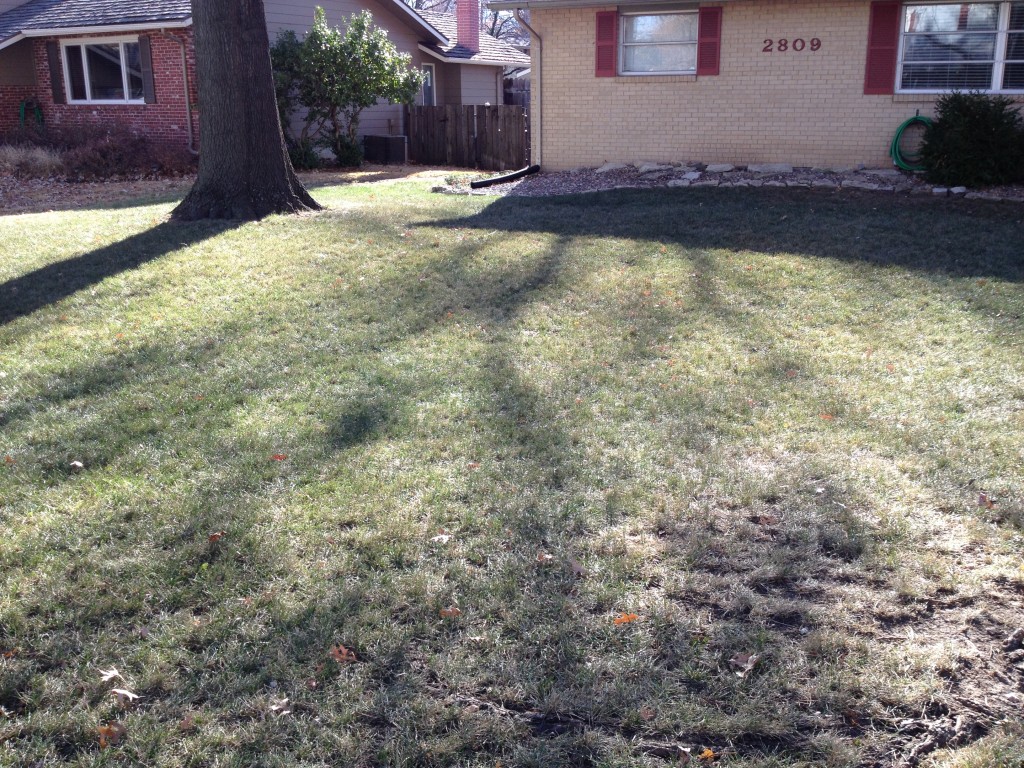
So I got to thinking… A quick fix to what I have been doing around the house is painting. Why can’t I paint my cool-season turfgrass like you would a warm-season turfgrass for winter color too. So I did…
I used a 3 gal backpack sprayer calibrated to deliver 0.5 gal/1,000 sq feet. I used a mixture of two different colorant products. I used this combination because this is what I had on hand and I didn’t have enough for a full application of one or the other. I mixed 10.5 fl oz of Sarge 2.0 (by Numerator Techinologies) and 10.5 fl oz of Wintergreen Plus (by Presision Labratories) in 1 gal of water. I applied in two directions for a total of 1 gal/1,000 sq feet colorant and water combination.
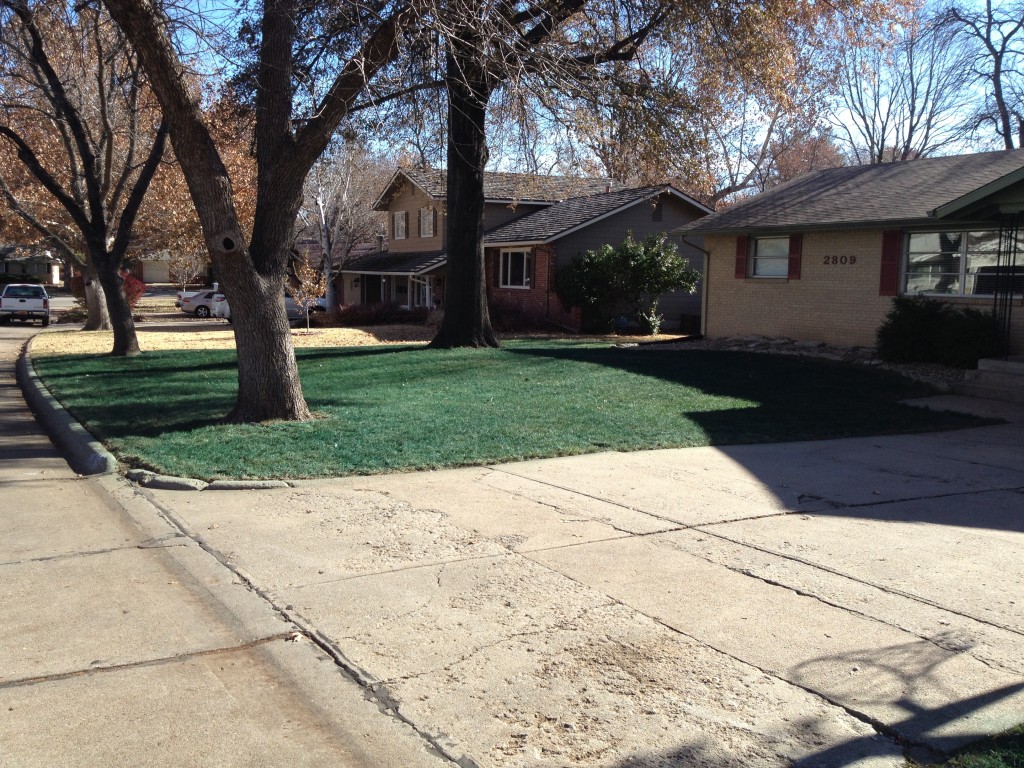
In the picture above you can see what it looked like right after colorant application. It was a huge contrast compared to my neighbor’s zoysiagrass lawn. I will have to admit that it looked “Really Fake” immediately after application. But I did receive a lot of attention: People walking their dogs would stop and stare, neighbors asked what kind of fertilizer I applied, and the best one was “It didn’t look like that this morning, What did you do?”
About two weeks after application it rained and the colorant faded a little bit. Now the dirt, rocks, and acorns that were present when I painted where not green anymore and it looked more natural.
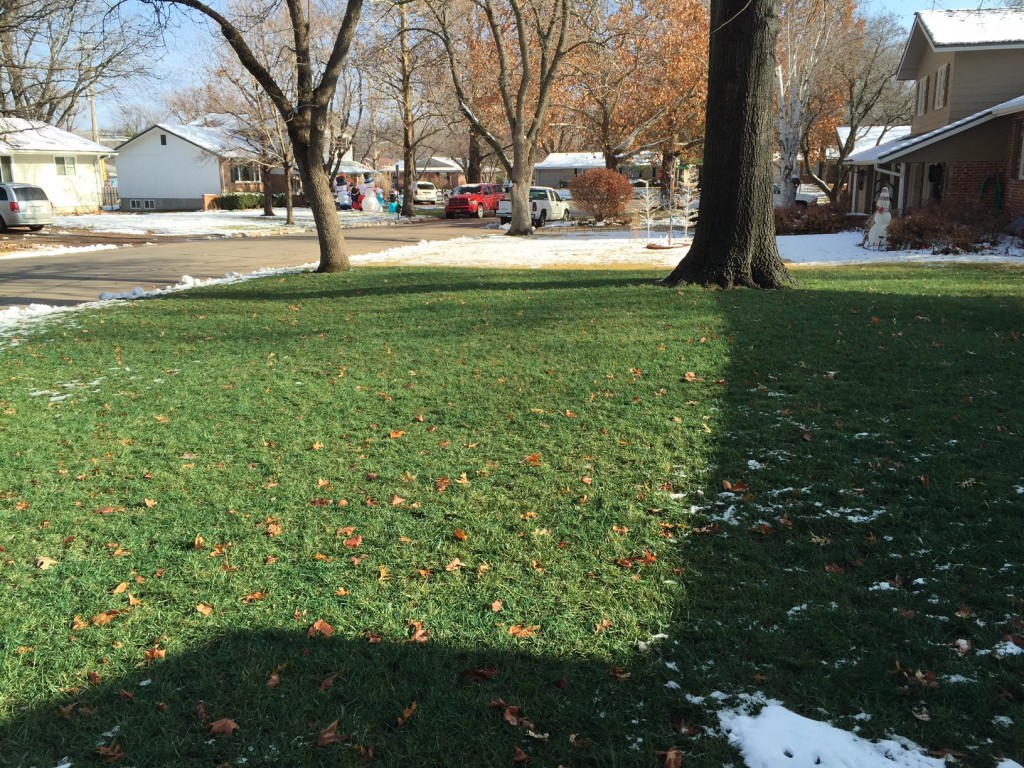
The picture above was taken on Dec. 20, 2014 a couple days after a snow fall. Not only is the color still there and looks great but my lawn melted snow faster than all of my neighbors.
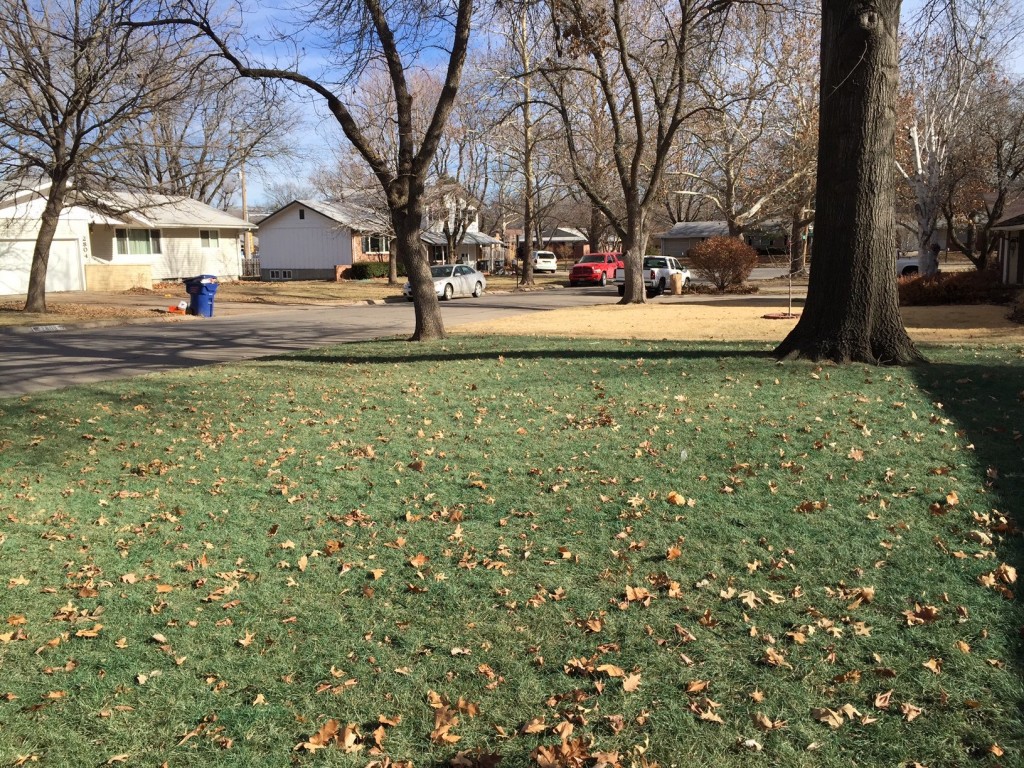
Still after a couple of snow falls, rain, random warm days and cold temperatures the color is still holding on into January of 2015.
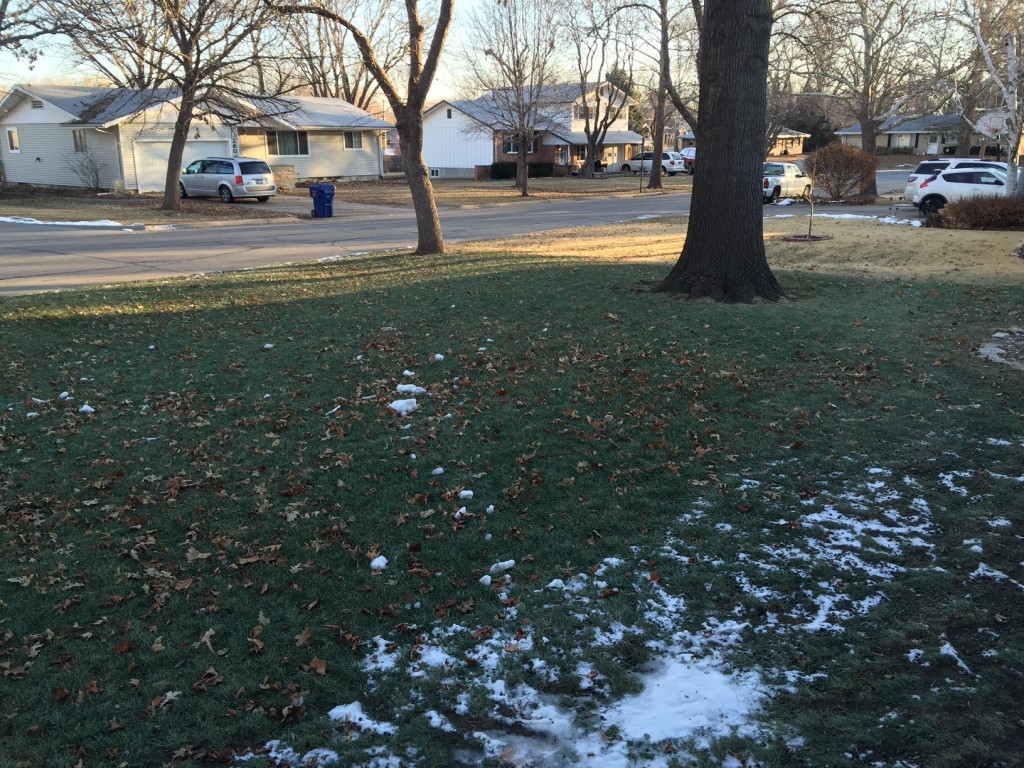
And the most recent picture was taken yesterday, January 23, 2015. Other than needing to clean the leaves up one more time I would say the colorant application looked great throughout the winter. I think this might not only be an option for winter color on warm-season grasses but also cool-season grasses as well.
Always remember to READ THE LABEL for the correct rate, turfgrass tolerance, and specific instructions before application!!!
***Mention of trade names or commercial products in this article is solely for identification purposes and does not imply recommendation or endorsement, nor is criticism implied of similar products not mentioned by Kansas State University.***
Don’t forget to follow me on twitter @KSUTurf.
Also, visit our facebook page www.facebook.com/KSUTurf
